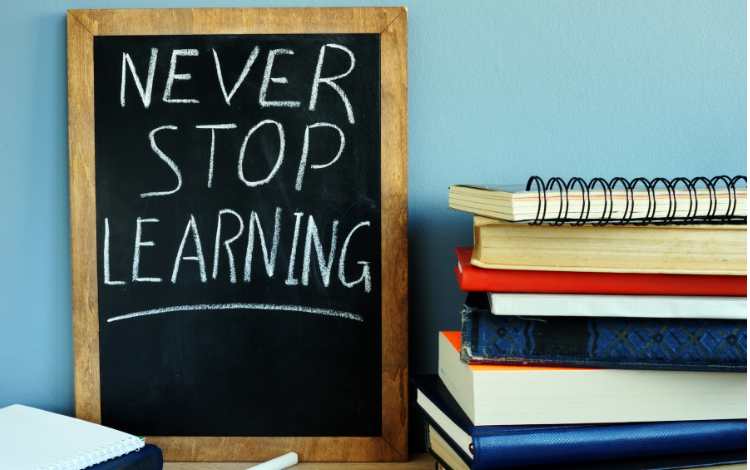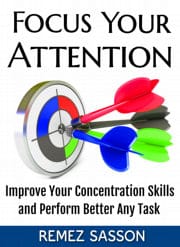
In a world in constant evolution, the search for continuous knowledge has become more than a choice but a necessity. The concept of Lifelong Learning emerges as an essential tool for professional and personal growth.
According to the Future of Jobs 2020 study carried out by the World Economic Forum, 94% of leaders expect employees to seek new skills by 2025.
In other words, companies are observing the need for their employees to update themselves more quickly and continuously. A Pew Research Center survey, for example, shows that at least 63% of American workers have taken a course or received additional training in the last year to improve their job skills and advance their careers.
Browse our online courses on meditation, positive thinking, overcoming procrastination, confidence, and freedom from distractions.
Learning is vital for organizations, and it must be included not only in the flow of work but also in the flow of life. Allow me to explore in detail what Lifelong Learning is and how it can shape a successful career path.
What Is Lifelong Learning?
Lifelong Learning, or “Continuous Learning”, implies recognizing that the world functions as a vast ecosystem, full of interactions and dynamics in constant transformation, and that it is important to evolve to keep up with these changes.
This means continually seeking knowledge, skills, and learning experiences, even after completing formal education (school and college), to adapt to changes in the world and continue to grow personally and professionally.
According to the Lifelong Learning Council Queensland (LLCQ), there are 4 main pillars related to the concept:
- Learning to know: cultivating curiosity and a predisposition to learn, developing critical and questioning thinking.
- Learning to do: transposing theoretical knowledge into practice; promoting learning through genuine experience and effective practice.
- Learning to live together: developing social skills, knowing how to give and receive feedback, as well as fostering teamwork skills.
- Learning to be: deep self-knowledge. Know your own interests, strengths, and limitations, as well as your purpose in life and the type of knowledge to be sought.
Finally, would you be able to say exactly which type of learning is most characterized by the concept of Lifelong Learning? Check out below why Self-Directed Learning is all about concepts.
4 Ways of Learning
Did you know that there are four distinct ways of learning? Each of them plays a unique and complementary role in the lifelong pursuit of knowledge. Let’s explore each of them, understanding how they contribute to an exceptionally enriching journey of growth and development.
1. Formal Learning
Formal learning is acquired in educational institutions, such as schools, universities, and technical courses. It is structured, following a pre-defined curriculum, and often culminates in recognized certifications or diplomas.
2. Informal Learning
Unlike formal learning, informal learning occurs in an unstructured way and, often, unintentionally, as if it were an “event” that happens naturally in different contexts of our lives.
It can happen through informal conversations, practical experiences in the workplace, or even through autonomous exploration of new subjects.
3. Non-Formal Learning
This type of learning lies between formal and informal. It does not follow a rigid classroom structure, but is organized and intentional. Workshops, seminars, and corporate training are examples of non-formal learning.
4. Self-Directed Learning
Self-Directed Learning is not an isolated event, like other types of learning, but rather a prolonged action that takes place over time.
The responsibility for seeking knowledge lies entirely with the learner. In other words, the person themselves takes the initiative to identify what their learning needs are and what skills they need or would like to develop.
This type of learning demands discipline, self-discernment, and a burning desire for personal and professional growth.
But pay attention! This does not mean that being self-directed is the same as learning alone. The presence or absence of other people in the process is each person’s choice based on their perceived need. It’s autonomously deciding your own path.
Furthermore, you can already see that this type of learning has everything to do with Lifelong Learning, right? I bet you’re wondering: “But how can I be a self-directed learner or a Lifelong Learner?”
The 5 Steps We Can Follow to Practice This Type of Learning Are Listed Below. Check Them Out
1. Planning: Have a unique place to store your learning, and set aside time in your schedule that is 100% dedicated to this. Creating a timeline presentation will help you prioritize and manage tasks that need to be done.
2. Define what will be learned: reflect on your challenges, needs, and/or desires. What can improve your life by learning something new?
3. Choose the content: define topics, subtopics, and maps to interesting and authoritative sources on the subject to be learned, and define a content plan in languages and formats according to your preference.
4. Learn from people and support networks: take advantage of your relationship network and look for mentors to support you in this new learning process.
5. Enjoy the experience: intentionally reflect on the results obtained with this new learning and seek to learn from the experiences.
Importance of Lifelong Learning in Companies
In organizations, Lifelong Learning plays a vital role in maintaining competitiveness and promoting innovation.
Fostering a Lifelong Learning culture within organizations is more than a strategic option, it is a necessity. Employees who embrace continuous learning bring with them a valuable set of adaptive skills, which translate into greater agility and efficiency in the workplace.
To achieve this, it is necessary for leaders to create safe spaces for learning in which people can have the psychological security to make mistakes while learning.
Furthermore, teams with this spirit of continuous learning are more likely to innovate and face challenges with resilience, creating a dynamic and proactive corporate environment.
Check out a list of benefits when encouraging a continuous learning mindset in the workplace:
- Productivity increases
- Satisfaction and engagement
- Collaborative and dynamic environment
- Competitive advantages
- Mastery of new technologies
- Network expansion
- Skills development
In short, continuous learning is the beacon that lights the path to professional and personal growth. By embracing the journey of the lifelong learner, we not only stay relevant in the job market but also cultivate a mindset of constant evolution that transcends professional barriers, enriching every aspect of our lives.
Lifelong Learning is, after all, the lever that drives full achievement and continuous excellence.

